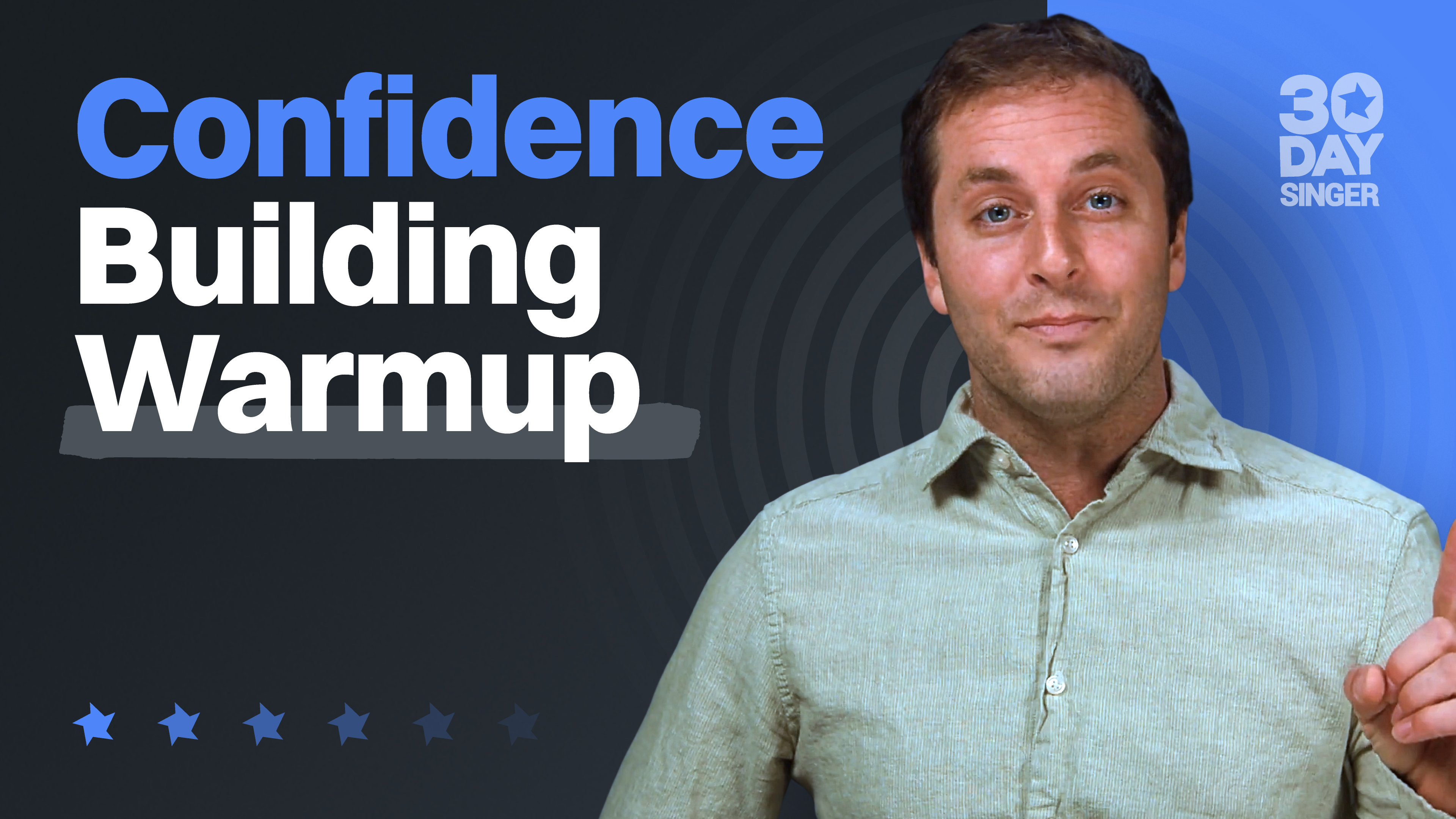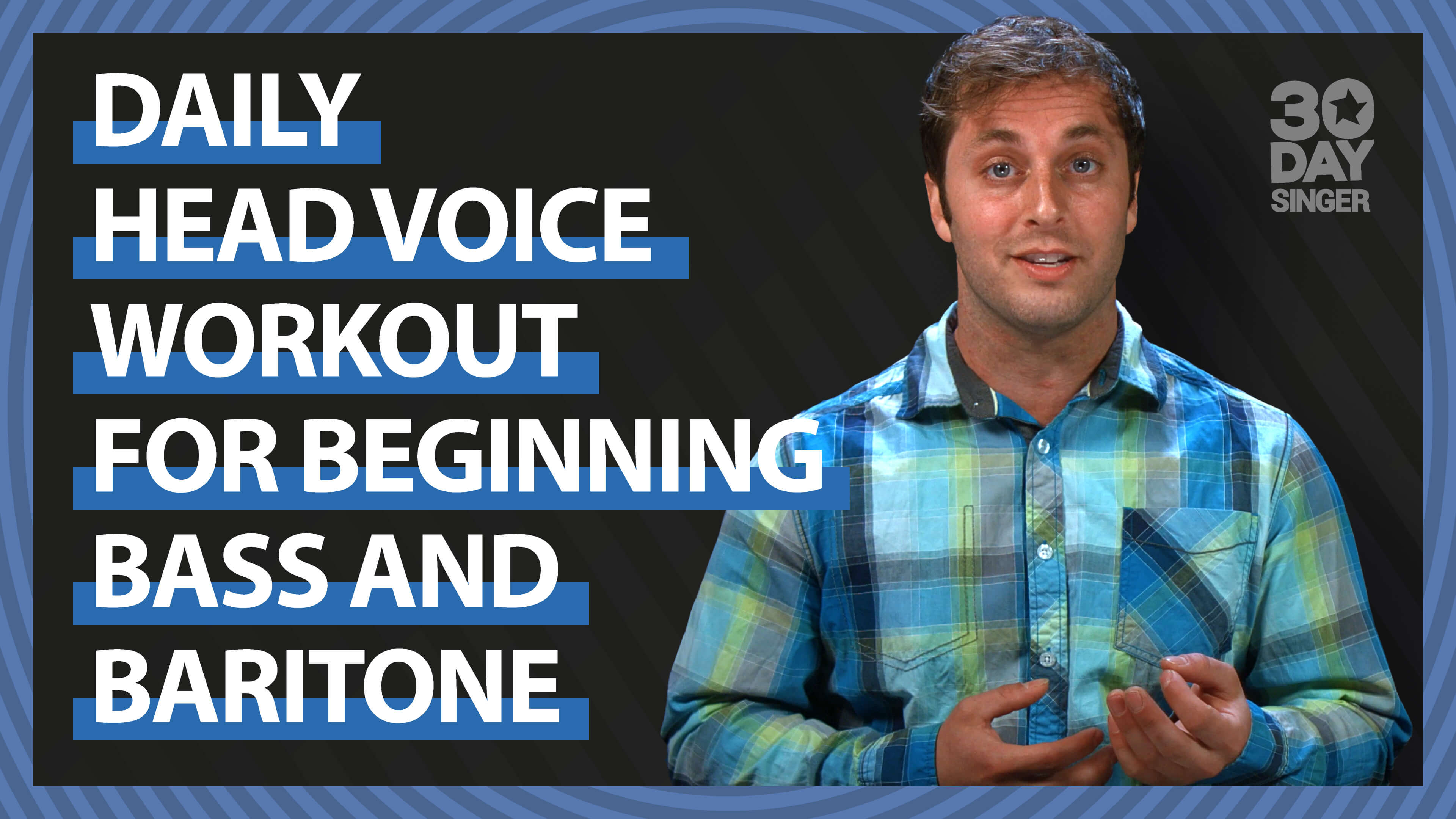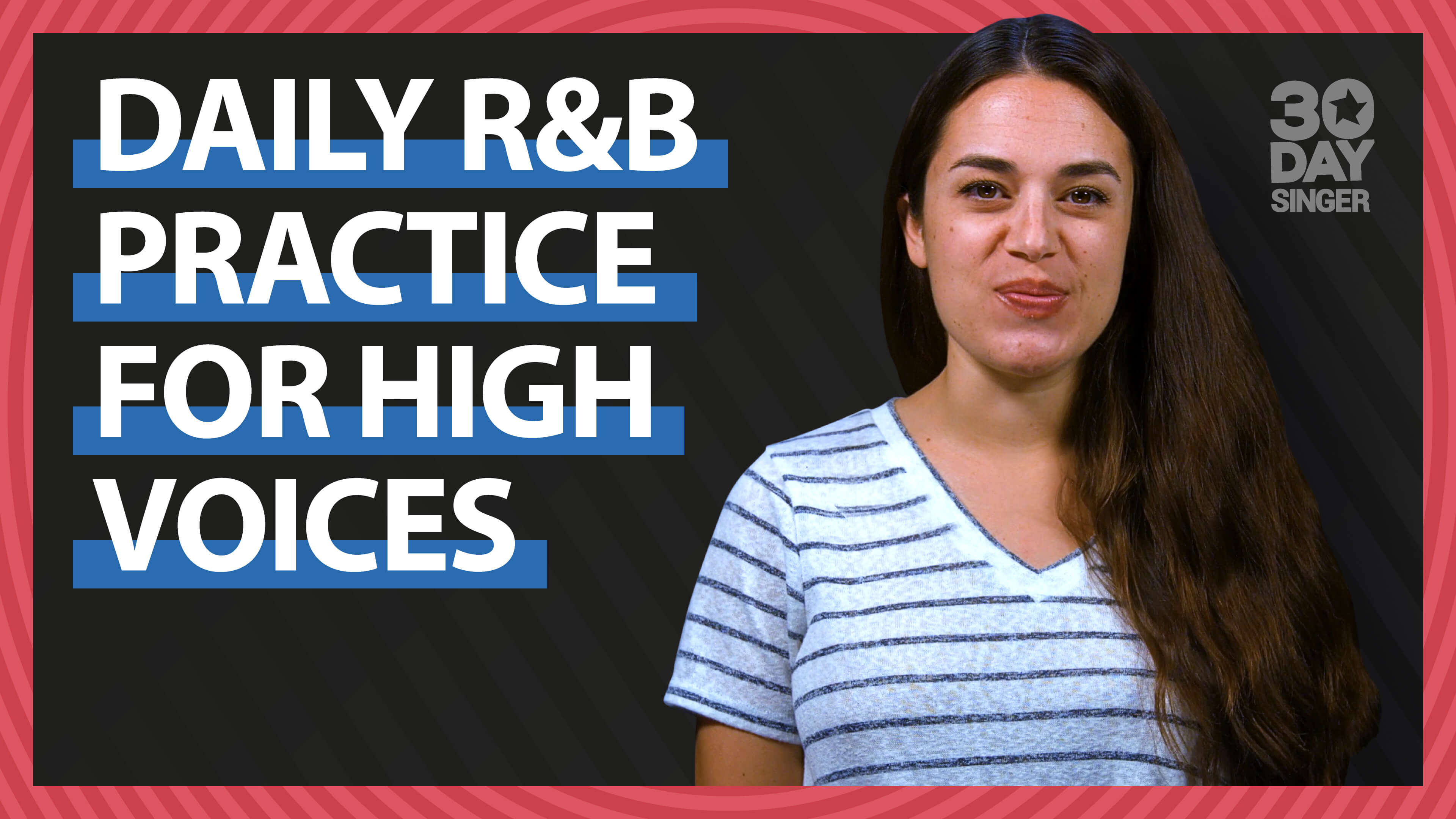Vocal Warmup & Health
Welcome to the Warm-ups section! This collection of lessons explores various warm ups which are essential to any singer's routine. We'll also give you helpful reminders and professional tips at maintaining your vocal health and preserving your voice. When you're stuck in a rut and not sure what how to start a regular practice routine, we recommend using these lessons to get you ready and more comfortable. These are great as standalone routines or you can use them at the beginning of your regular practice routine. A good warm-up is the key to avoiding any vocal strain and prepare you to sing your very best.
TUTORIALS
Confidence Building Warm-Ups
By Abram PoliakoffThis lesson is designed to help you build true confidence as a singer—not by eliminating nerves, but by learning how to channel them into energy, focus, and power. Across five parts, you’ll move through energizing body and vocal warmups, grounding techniques for strength and stability, focus drills for precision, and a final recording challenge that simulates real performance conditions. Along the way, you’ll also practice the song “This is the Time” with lyrics and chords provided, reinforcing your ability to stay present and resilient under pressure. By the end, you’ll have practical tools to strengthen both your voice and your performance confidence.
Daily Range Extension Practice For Low Voices
By Abram PoliakoffThis series will cover the three areas most singers care about: low notes, high head voice or falsetto, and mix or belt range.
Daily Register Blending for Low Voices
By Abram PoliakoffIn this tutorial we’ll use wide-range exercises that require shifting between registers. This tutorial is geared towards those with lower voices
R&B Daily Practice for Low Voices
By Abram PoliakoffDive into the world of R&B singing lesson where we groove to the beats and belt out those silky smooth tunes! Join Abram for this daily RnB Practice.
Daily Head Voice For Beginning Bass And Baritone
By Abram PoliakoffEven if you don’t foresee yourself using a lot of head voice in the songs you sing, it’s crucial that you spend some time in head voice. Head voice not just for high notes: it’s also for flexibility! Join Abram for this daily exercise.
Daily R&B Practice For High Voices
By Camille van NiekerkJoin Camille as she walks you through a daily practice for one of our most requested subjects! This lesson will give you the practice needed to make the kinds of sounds and stylizations you’ll use in your favorite R&B songs.
Daily Pop Practice For High Voices
By Camille van NiekerkAs with any skill, the more you do it, the easier it becomes! If you love singing pop style music, this tutorial is for you. Camille will work you through exercises for pop style riffs, mix belt, vocal fry, pop flip and register work.
Daily Range Extension Practice For High Voices
By Camille van NiekerkThis series will cover the three areas most singers care about: low notes, high head voice or falsetto, and mix or belt range. This series is intended for altos, mezzos and sopranos.
Daily Register Blending Practice for High Voices
By Camille van NiekerkRegister blending is a skill that will not be required often, but is still very worth working on. In this lesson you will be developing the ability to transition seamlessly between registers; and develop the ability to sing at different volumes and intensities throughout your range.
Daily Chest Voice Workout For Beginning Tenors And High Baritone
By Abram PoliakoffChest voice is used for the pitches at the lower end of your range - although for male or lower voiced singers, chest register usually takes up more of your range over all. Join Abram for a daily workout to help create, and strengthen your chest voice!
Frequently Asked Questions
Some great vocal warmups for singers start with gentle humming or lip trills to relax and engage your vocal cords without straining them. Then, work through some scales to gradually increase your pitch range and get your voice fully warmed up.
For a quick 5 minutes vocal warm up, try some lip trills or gentle humming for a couple of minutes. It’s effective and quickly preps your vocal cords for singing or speaking without overdoing it.
When your voice is sick, keep singing warmups light and gentle—like humming or low, quiet scales. Also, drink lots of warm fluids and rest your voice as much as possible.
Start with some light humming, followed by a few pitch glides (from low to high sounds) to get your voice comfortable. Finish with a few tongue and lip trills to help with articulation.
Two good vocal warm ups are humming and lip trills. These are super effective and easy vocal warm-ups that gently activate your vocal cords without causing strain. Both are great for starting any vocal exercise.
Breathing exercises and resonance drills, like humming and vocal slides, improve the quality and projection of your speaking voice. They help develop control and clarity, making your voice sound more confident.
Hydrate regularly, practice breathing exercises, and do daily warm-ups. Consistency with these habits will help your voice sound smoother and stronger over time.
To strengthen a weak speaking voice, practice deep breathing and speak from your diaphragm to add power. Also, try projection exercises like speaking in front of a mirror to boost confidence and clarity.
Focus on articulation exercises, like tongue twisters, and practice controlling your breath to avoid running out mid-sentence. Over time, these will improve clarity and help you speak with ease.
The four vocal function exercises are sustained phonation (holding a sound steadily), pitch glides (sliding between notes), lip trills, and staccato sounds on different pitches. They work together to strengthen and balance your vocal cords.












